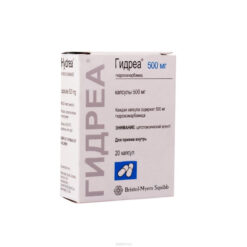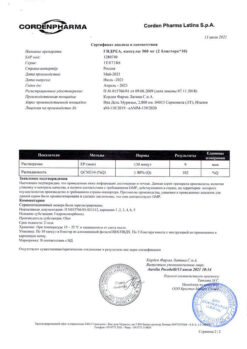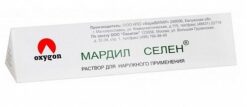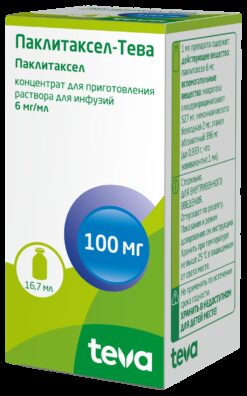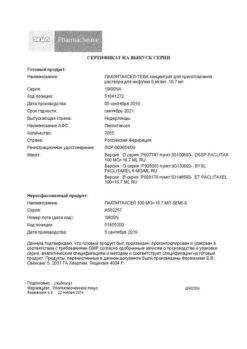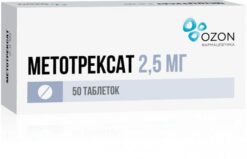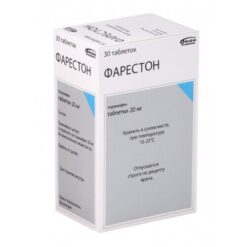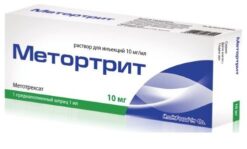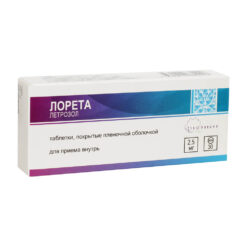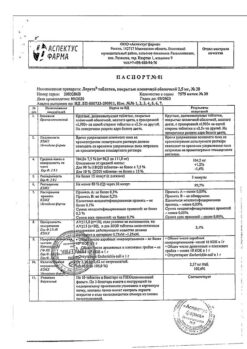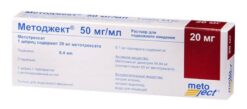No products in the cart.
Description Pharmacotherapeutic group: ATX: Pharmacodynamics: Pharmacokinetics:
Antitumor agent, proteinutyrosine kinase inhibitor
L.01.X.E.01 Imatinib
. Imatinib has a selective inhibitory effect on the enzyme Bcr-Abl- tyrosine kinase formed by the fusion of the Bcr gene site (breakpoint cluster region) and the Abl (Abelson) protooncogene at the cellular level, selectively inhibits proliferation and causes apoptosis of cell lines, expressing Bcr-Abl tyrosine kinase, including immature leukemia cells produced by patients with Philadelphia chromosome-positive chronic myeloleukemia and acute lymphoblastic leukemia.
Imatinib selectively inhibits Bcr-Abl-positive colonies derived from blood cells of patients with chronic myeloleukemia.
Imatinib inhibits proliferation and induces apoptosis of gastrointestinal stromal tumor cells expressing tyrosine kinase with a c- Kit receptor mutation.
The activation of receptors for platelet-derived growth factor or the Abl-fragment of tyrosine kinase can be the cause of both myelodysplastic/myeloproliferative diseases, as well as hypereosinophilic syndrome and chronic eosinophilic leukemia and bulging dermatofibrosarcoma.
The activation of the c-Kit receptor tyrosine kinase and receptors to platelet-derived growth factors may underlie the pathogenesis of systemic mastocytosis. Imatinib inhibits cell signaling and cell proliferation resulting from dysregulation of platelet and stem cell growth factor activity, the c-Kit receptor and the Abl fragment of tyrosine kinase.
Absorption
The drug has an average bioavailability of 98% after oral administration. The coefficient of variation for the area under the curve “concentration-time” (AUC) is 40-60%.
When the drug is taken with a high-fat meal, compared to fasting, a slight decrease in absorption (approximately 11% decrease in maximum imatinib plasma concentration and approximately 7.4% decrease in AUC) and slowing of absorption rate (increase in time to reach maximum imatinib plasma concentration by 1.5 hours) are noted. About 95% of imatinib is bound to plasma proteins (mainly to albumin and acidic alpha-glycoproteins, to a small extent to lipoproteins).
Metabolism
Imatinib is metabolized mainly in the liver with the formation of the main metabolite (N-demethylated piperazine derivative) circulating in the blood stream. In vitro metabolite of imatinib has pharmacological activity similar to that of the parent substance. The AUC of the metabolite is about 16% of the AUC of imatinib. Binding of metabolite to plasma proteins is similar to that of imatinib.
The pharmacokinetic parameters do not change with repeated administration of the drug once a day, and the equilibrium concentration of imatinib is about 1.5-2.5 times higher than the initial concentration.
Pharmacokinetics in special patient groups
In patients over 65 years of age, the volume of distribution is increased by approximately 12%, which is clinically insignificant. For patients with a body weight of 50 kg, the average clearance of imatinib is approximately 8.5 l/h, and for patients with a body weight of 100 kg it is approximately 11.8 l/h.
In children and adolescents under 18 years of age, as in adults, imatinib is rapidly absorbed after oral administration. The AUC in this group of patients in the dose range of 260 and 340 mg/m2 is similar to that in adults in the dose range of 400 mg and 600 mg, respectively.
When AUC0-24 values in children and adolescents were compared on days 1 and 8 after repeated dosing of 340 mg/m2 once daily, there was a 1.7-fold increase of this parameter indicating imatinib cumulation.
Based on a pooled population pharmacokinetic analysis in children with hematologic diseases, it was shown that imatinib clearance is directly proportional to body surface area; other demographic parameters (age, body weight and BMI) have no clinically significant effect on imatinib exposure.
In patients with varying degrees of hepatic impairment, the average AUC values are not increased.
In patients with mild to moderate renal impairment (creatinine clearance > 30 mL/min), an increase of approximately 1.5-2.0-fold in plasma exposure of imatinib is noted, corresponding to an increase in the concentration of acidic alpha-glycoproteins (major plasma proteins that bind to imatinib).
There is no correlation between drug exposure and severity of renal impairment.
.
Indications
Indications
– First detected positive for the Philadelphia chromosome (Ph+)
chronic myeloid leukemia (XML) in children and adults;
– Ph+ XML in the chronic phase with failure of previous interferon alpha therapy or in the acceleration phase or blast crisis in children and adults;
– newly diagnosed Philadelphia chromosome positive (Ph+) acute lymphoblastic leukemia (ALL) in adult patients in combination with chemotherapy;
– relapsed or refractory Ph+ ALL in adult patients as monotherapy;
– myelodysplastic/myeloproliferative diseases associated with gene rearrangements of the platelet growth factor receptor in adult patients;
– systemic mastocytosis in adult patients with no D816V c-Kit mutation or with unknown c-Kit mutation status;
– hypereosinophilic syndrome and/or chronic eosinophilic leukemia in adults with positive or negative abnormal FIP1L1-PDGFR alpha-tyrosine kinase;
– unresectable and/or metastatic malignant gastrointestinal stromal tumors, positive for c-Kit (CD 117) in adult patients;
– adjuvant therapy of gastrointestinal stromal tumors positive for c-Kit (CD 117) in adult patients;
– inoperable, recurrent and/or metastatic dermatofibrosarcoma protuberans in adult patients.
Pharmacological effect
Pharmacological effect
Pharmacotherapeutic group:
Antitumor agent, protein tyrosine kinase inhibitor
ATX:
L.01.X.E.01 Imatinib
Pharmacodynamics:
Imatinib has a selective inhibitory effect on the Bcr-Abl tyrosine kinase enzyme, formed by the fusion of the Bcr gene (breakpoint cluster region) and the Abl proto-oncogene (Abelson), at the cellular level, selectively suppresses proliferation and causes apoptosis of cell lines expressing Bcr-Abl tyrosine kinase, including immature leukemia cells formed in patients with positive Philadelphia chromosome chronic myeloid leukemia and acute lymphoblastic leukemia.
Imatinib selectively inhibits Bcr-Abl-positive colonies derived from blood cells of patients with chronic myeloid leukemia.
Imatinib inhibits the proliferation and induces apoptosis of gastrointestinal stromal tumor cells expressing tyrosine kinase with a c-Kit receptor mutation.
Activation of receptors for platelet growth factors or the Abl fragment of tyrosine kinase can cause the development of both myelodysplastic/myeloproliferative diseases and hypereosinophilic syndrome and chronic eosinophilic leukemia and dermatofibrosarcoma protuberans.
Activation of c-Kit receptor tyrosine kinase and platelet growth factor receptors may underlie the pathogenesis of systemic mastocytosis. Imatinib inhibits cell signaling and cell proliferation resulting from dysregulation of platelet and stem cell growth factors, c-Kit receptor and Abl tyrosine kinase.
Pharmacokinetics:
Absorption
After oral administration, the bioavailability of the drug averages 98%. The coefficient of variation for the area under the concentration-time curve (AUC) is 40-60%.
When taking the drug with a high-fat meal, compared to taking it on an empty stomach, there is a slight decrease in the degree of absorption (a decrease in the maximum concentration of imatinib in the blood plasma by approximately 11%, AUC by approximately 7.4%) and a slower rate of absorption (an increase in the time to reach the maximum concentration of imatinib in the blood plasma by 1.5 hours). Distribution
About 95% of imatinib is bound to plasma proteins (mainly albumin and acid alpha glycoproteins, to a small extent to lipoproteins).
Metabolism
Imatinib is metabolized primarily in the liver to form a major metabolite (N-demethylated piperazine derivative) that circulates in the bloodstream. In vitro, the imatinib metabolite has pharmacological activity similar to that of the parent substance. The AUC of the metabolite is approximately 16% of the AUC of imatinib. The binding of the metabolite to plasma proteins is similar to that of imatinib.
Removal
After taking one dose, the drug is excreted from the body within 7 days, mainly in the form of metabolites (68% by the intestines and 13% by the kidneys). About 25% of the dose is excreted unchanged (20% by the intestines and 5% by the kidneys). The half-life of imatinib is approximately 18 hours.
With repeated dosing of the drug once a day, the pharmacokinetic parameters do not change, and the equilibrium concentration of imatinib exceeds the initial one by approximately 1.5-2.5 times.
Pharmacokinetics in special groups of patients
In patients over 65 years of age, the volume of distribution increases by approximately 12%, which is clinically insignificant. For patients weighing 50 kg, the average clearance of imatinib is approximately 8.5 L/h, and for patients weighing 100 kg, it is approximately 11.8 L/h.
However, these differences are not significant and do not require adjustment of the drug dosage depending on the patient’s body weight. The pharmacokinetics of imatinib are independent of gender. Changes in clearance and volume of distribution of imatinib when used simultaneously with other drugs are insignificant and do not require dose changes.
In children and adolescents under 18 years of age, as in adults, imatinib is rapidly absorbed after oral administration. The AUC in this group of patients in the dose range of 260 and 340 mg/m2 is similar to that in adults in the dose range of 400 mg and 600 mg, respectively.
When comparing AUC0-24 values in children and adolescents on the 1st and 8th days after repeated administration of the drug at a dose of 340 mg/m2 once a day, an increase in the value of this indicator by 1.7 times is noted, indicating the accumulation of imatinib.
Based on a pooled population pharmacokinetic analysis in children with hematological diseases, it was shown that imatinib clearance is directly proportional to body surface area; other demographic indicators (age, body weight and body mass index) do not have a clinically significant effect on imatinib exposure.
In patients with varying degrees of liver dysfunction, mean AUC values do not increase.
When using imatinib in patients with mild or moderate renal impairment (creatinine clearance > 30 ml/min), there is an increase in plasma exposure of the drug by approximately 1.5-2.0 times, corresponding to an increase in the concentration of acidic alpha glycoproteins (the main plasma proteins that bind to imatinib).
There was no correlation between drug exposure and the severity of renal disorders.
Special instructions
Special instructions
Treatment with imatinib should only be carried out under the supervision of a physician experienced in working with anticancer drugs.
When handling the drug, avoid contact with the skin and eyes, as well as inhalation of the drug powder.
Experience in treating children with CML under 2 years of age with imatinib is limited, and experience with the drug for other indications is limited in patients under 18 years of age. Close monitoring of growth in children treated with imatinib is recommended due to reports of growth retardation.
When using imatinib, it is recommended to conduct regular clinical blood tests and monitor liver function (transaminases, bilirubin, alkaline phosphatase).
Patients with heart and kidney disease should be closely monitored.
Due to the fact that when using imatinib, severe fluid retention is observed in 1-2% of cases, it is recommended to regularly monitor the body weight of patients. In case of rapid, unexpected weight gain, the patient should be examined and, if necessary, temporarily discontinue imatinib therapy and/or prescribe diuretics.
The highest incidence of fluid retention is observed in elderly patients with concomitant cardiovascular diseases. In some cases, severe fluid retention can be severe and fatal.
When using the drug, patients with liver diseases should regularly conduct a clinical blood test and determine the “activity” of liver enzymes. Since there are reports of the development of hypothyroidism during the use of Imatinib in patients who have undergone thyroidectomy and are receiving sodium levothyroxine replacement therapy, it is necessary to regularly determine the concentration of thyroid-stimulating hormone in this category of patients.
In patients with hypereosinophilia syndrome and heart disease, isolated cases of cardiogenic shock/left ventricular failure have been reported at the start of Imatinib therapy. These adverse events are relieved after the introduction of systemic glucocorticosteroids, the adoption of measures aimed at maintaining blood circulation, and temporary withdrawal of Imatinib.
In patients with MDS/MPD and high levels of eosinophils, an ECG study should be performed and the serum concentration of cardiac-specific troponin should be determined. If abnormalities are detected at the beginning of therapy, the possibility of prophylactic use of systemic glucocorticosteroids (1-2 mg/kg) for 1-2 weeks simultaneously with imatinib should be considered.
Bleeding was observed both in the abdominal organs and in the liver, depending on the location of the tumor foci.
Reliable methods of contraception should be used during imatinib therapy and for at least 3 months thereafter.
There may be an increase in the activity of liver transaminases or bilirubin in patients with XMJI, which is controlled by reducing the dose of the drug or temporarily interrupting treatment.
Due to the risk of tumor lysis syndrome, clinically significant dehydration and elevated uric acid levels in patients should be corrected if necessary before using imatinib.
Impact on the ability to drive vehicles. Wed and fur.:
Some side effects of the drug, such as dizziness and blurred vision, may adversely affect the ability to drive a car and perform potentially dangerous activities that require increased concentration and speed of psychomotor reactions. If the above adverse events occur, you should refrain from performing these activities.
Active ingredient
Active ingredient
Imatinib
Composition
Composition
Active ingredient:
imatinib mesylate – 128.56 mg in terms of imatinib – 100 mg;
excipients: anhydrous lactose – 350.94 mg, croscarmellose sodium – 10.00 mg, povidone K-30 – 7.50 mg, talc – 3.00 mg, magnesium stearate – 5.00 mg, crospovidone – 15.00 mg.
shell composition: Insta-Coat film coating – 6.0 mg (polyethylene glycol – 1.2 mg, hypromellose – 2.4 mg, talc – 1.2 mg, titanium dioxide (E 171) – 1.2 mg), red iron oxide (E 172) – 4.00 mg.
Pregnancy
Pregnancy
Pregnancy
There are currently no data on the use of imatinib in pregnant women. Animal studies have shown reproductive toxicity, but the potential risk to the fetus is not yet known. The use of imatinib is contraindicated during pregnancy. Women of childbearing potential should use reliable methods of contraception during imatinib therapy and for at least 3 months thereafter.
Breastfeeding
Imatinib and its metabolites are excreted in breast milk. Due to the lack of data on the effects of imatinib on newborns, women taking imatinib should stop breastfeeding.
Contraindications
Contraindications
– Hypersensitivity to the active substance or any other component of the drug.
– Pregnancy, breastfeeding period.
– Children under 2 years of age (efficacy and safety have not yet been established).
With caution:
Imatinib should be used with caution in patients with severe liver failure, severe renal impairment (creatinine clearance less than 30 ml/min), cardiovascular disease or in the presence of risk factors for heart failure, as well as during regular hemodialysis.
Caution is required when using imatinib simultaneously with drugs that inhibit the CYP3A4 isoenzyme, strong inducers of the CYP3A4 isoenzyme, with drugs that are substrates of the CYP3A4 isoenzyme, paracetamol, warfarin (see section “Interaction with other drugs”).
Side Effects
Side Effects
At the advanced stage of malignant diseases, the assessment of adverse events (AEs) of the drug is difficult due to symptoms associated with multiple concomitant disorders, their progression and the use of various medications.
When taken orally over a long period of time in adults and children with CML, Imatinib is generally well tolerated. Most AEs were mild or moderate. Side effects were similar in almost all patients receiving imatinib for various indications.
However, patients with malignant gastrointestinal stromal tumors were less likely to have myelosuppression; intratumoral bleeding was observed only in this group of patients. The most common AEs associated with taking the drug were neutropenia, thrombocytopenia, anemia, headache, dyspepsia, edema, weight gain, nausea, vomiting, diarrhea, myalgia, muscle cramps, rash, weakness, abdominal pain. All these phenomena were easily stopped.
Peripheral edema was often observed, mainly in the periorbital region and lower extremities.
Other serious adverse events with imatinib include hepatotoxicity, acute renal failure, hypophosphatemia, respiratory disorders, tumor lysis syndrome and growth retardation in children.
Combined side effects such as pleural effusion, ascites, pulmonary edema and rapid weight gain with or without peripheral edema can be classified as “fluid retention” and in some cases can be serious (including life-threatening).
During clinical trials in patients with CML and inoperable and/or metastatic malignant gastrointestinal stromal tumors, the following adverse events were noted, listed below by organ and system with their frequency of occurrence: very common (>1/10), common (>1/100 1/1000 1/10000 – <1/1000), very rare (<1/10000), including individual messages:
Infectious diseases: uncommon – herpes simplex, herpes zoster, nasopharyngitis, pneumonia, sinusitis, inflammation of the subcutaneous tissue, upper respiratory tract infections, influenza, urinary tract infections, gastroenteritis, sepsis; rarely – mycoses.
Benign, malignant and unspecified neoplasms (including cysts and polyps): rarely – tumor lysis syndrome.
Disorders of the blood and lymphatic system: very often – neutropenia, thrombocytopenia, anemia; often – pancytopenia, febrile neutropenia, infrequently – thrombocythemia, lymphopenia, suppression of bone marrow hematopoiesis, eosinophilia, lymphadenopathy; rarely – hemolytic anemia.
Metabolic and nutritional disorders: often – anorexia; uncommon – hypokalemia, increased or decreased appetite, hypophosphatemia, dehydration, hyperuricemia, gout, hypercalcemia, hyperglycemia; hyponatremia; rarely – hyperkalemia, hypomagnesemia.
Mental disorders: often – insomnia; infrequently – depression, anxiety, decreased libido; rarely – confusion.
Nervous system disorders: very often – headache; often – dizziness, paresthesia, taste disturbance, hypoesthesia; uncommon – migraine, drowsiness, fainting, peripheral neuropathy, memory impairment, sciatica, restless legs syndrome, tremor, hemorrhagic stroke, cerebral edema; rarely – increased intracranial pressure, convulsions, optic neuritis.
Violations of the organ of vision: often – swelling of the eyelids, increased lacrimation, conjunctival hemorrhages, conjunctivitis, dry eye syndrome, blurred vision; uncommon – eye irritation, eye pain, orbital edema, hemorrhages in the sclera of the eye, retinal hemorrhages, blepharitis, macular edema, rarely – cataracts, papilledema, glaucoma, vitreous hemorrhages.
Hearing disorders and labyrinthine disorders: infrequently – vertigo, tinnitus, hearing loss.
Cardiovascular system disorders: uncommon – palpitations, chronic heart failure, pulmonary edema, tachycardia, hot flashes, hemorrhages, thrombosis/embolism; rarely – arrhythmias, atrial fibrillation, sudden cardiac arrest; myocardial infarction, angina pectoris, pericardial effusion, increased and decreased blood pressure, hematomas, subdural hematomas, cold extremities, Raynaud’s syndrome, pericarditis; cardiac tamponade; very rarely – anaphylactic shock.
Disorders of the respiratory system, chest and mediastinal organs: often – nosebleeds, shortness of breath, cough; uncommon – pleural effusion, pain in the pharynx or larynx, pharyngitis, acute respiratory failure, interstitial pneumonia; rarely – pleural pain, pulmonary fibrosis, pulmonary hypertension, pulmonary hemorrhage.
Disorders of the digestive system: very often – nausea, vomiting, diarrhea, dyspepsia, abdominal pain; often – bloating, flatulence, constipation, gastroesophageal reflux, dry mouth, gastritis; uncommon – stomatitis, ulceration of the oral mucosa, gastrointestinal bleeding, belching, melena, esophagitis, ascites, gastric ulcer, vomiting blood, cheilitis, dysphagia, pancreatitis, bleeding from a gastrointestinal tumor/necrosis of a gastrointestinal tumor, gastrointestinal perforation; rarely – colitis, paralytic/obstructive intestinal obstruction, inflammatory bowel disease, diverticulitis.
Disorders of the liver and biliary tract: often – increased activity of liver enzymes, infrequently – jaundice, hepatitis, hyperbilirubinemia, rarely – liver failure, liver necrosis.
Disorders of the skin and subcutaneous tissues: very often – periorbital edema, dermatitis, eczema, skin rash; often – swelling of the face, itching, erythema, dry skin, alopecia, night sweats, photosensitivity reactions; uncommon – pustular rash, bruises, increased sweating, urticaria, ecchymoses, increased susceptibility to hematoma formation, hypotrichosis, hyperpigmentation/hypopigmentation of the skin, exfoliative dermatitis, nail damage, folliculitis, petechiae, psoriasis, purpura, bullous rash; rarely – acute febrile neutrophilic dermatosis (Sweet’s syndrome), discoloration of nails, angioedema, erythema multiforme, leukoclastic vasculitis, Stevens-Johnson syndrome, acute generalized pustular exanthema, palmoplantar erythrodysesthesia, lichenoid keratosis, lichen planus; toxic epidermal necrolysis; frequency unknown – drug rash with eosinophilia and systemic symptoms.
Musculoskeletal and connective tissue disorders: very often – muscle spasms and cramps, musculoskeletal pain, including myalgia, arthralgia, bone pain; often – swelling of the joints; infrequently – stiffness of muscles and joints, rarely – muscle weakness, arthritis; frequency unknown – growth retardation in children, avascular necrosis/necrosis of the femoral head, rhabdomyolysis/myopathy.
Disorders of the kidneys and urinary system: uncommon – kidney pain, hematuria, acute renal failure, frequent urination.
Disorders of the endocrine system, genital organs and mammary glands: infrequently – gynecomastia, erectile dysfunction, menorrhagia, menstrual irregularities, sexual dysfunction, nipple pain, breast enlargement, scrotal swelling; very rarely – bleeding from a corpus luteum/ovarian cyst.
Other: very often – fluid retention and swelling, increased fatigue, weight gain; often – weakness, increased body temperature, anasarca, chills, trembling, weight loss, infrequently – chest pain, general malaise, increased creatinine levels and the activity of alkaline phosphatase, creatine phosphokinase, lactate dehydrogenase in the blood serum; rarely – increased amylase activity in blood plasma.
Description of individual AEs
Inhibition of hematopoiesis
The frequency of hematopoietic inhibition and the degree of its severity were maximum when the drug was used in high doses and, apparently, depended on the stage of XML. In general, the suppression of hematopoiesis during the use of imatinib in patients with XML was reversible and in most cases did not require drug discontinuation or dose reduction. Discontinuation of the drug was required in a small number of cases. Such phenomena as pancytopenia, lymphopenia and suppression of hematopoiesis were also noted.
Hemorrhage/bleeding
The most common clinically significant bleeding events were bleeding from the gastrointestinal tract (GIT). They most often occurred in patients with advanced stages of XMJ1 and in patients with malignant stromal tumors of the gastrointestinal tract, in whom they may be a consequence of the underlying disease (tumor bleeding due to tumor necrosis).
In patients with XMJI, in whom hematopoiesis was suppressed before the start of treatment, hemorrhages in the central nervous system or gastrointestinal tract are also often observed during treatment. It has been established that patients with leukemia with acute development of the disease often experience bleeding/hemorrhage caused by thrombocytopenia or thrombocytopathy.
Swelling and fluid retention
Swelling is a common side effect of imatinib. The incidence of edema in patients receiving imatinib for all indications is more than 50%. The frequency and severity of edema depends on the dose and appears to correlate with the concentration of the drug in the blood plasma. Most often, periorbital edema occurs, with slightly less frequency – edema of the lower extremities.
Specific treatment is usually not required. Heart failure is rare in patients with edema and fluid retention. In patients with advanced CML, the incidence of heart failure was higher than in patients in other categories, which can be explained by their weakened condition in general. The same trend was observed for renal failure in patients with edema and fluid retention. The majority of patients with edema and fluid retention were elderly (over 65 years of age).
Rash and severe skin adverse reactions
A number of patients receiving imatinib experienced a generalized erythematous, maculopapular and pruritic rash, which may resolve spontaneously despite continued treatment with the drug. Some patients experienced itching that was not accompanied by a rash; in some cases erythroderma was present.
Rash was reported in approximately one third of all patients receiving imatinib for all indications. The rash is often accompanied by pruritus and typically appears as erythematous, maculopapular lesions on the forearm, trunk, or face.
Although in most cases the rash is mild and goes away without treatment, more severe cases may require temporary or complete discontinuation of the drug. As a rule, the severity of the rash decreases after the prescription of antihistamines and glucocorticosteroids for topical use. In some cases, it is necessary to use glucocorticosteroids for systemic use.
Hepatotoxicity
The drug may have a toxic effect on the liver. Violations of biochemical indicators of liver function, as a rule, consist of a slight increase in the activity of aminotransferases and an increase in the concentration of bilirubin in the blood serum.
Toxic effects on the liver usually appear during the first two months of treatment, but in some cases it appeared 6-12 months after the start of treatment. As a rule, after discontinuation of the drug, biochemical indicators of liver function normalize within 1-4 weeks. There have been cases of development of cytolytic and cholestatic hepatitis and liver failure, in some cases accompanied by death.
Obstruction, perforation or ulcer of the stomach or intestines
A small proportion of patients receiving imatinib have experienced gastrointestinal ulceration, which in some cases may be due to local irritation of imatinib. Hemorrhagic tumor necrosis, as well as gastrointestinal obstruction and perforation, were most often observed in patients with malignant gastrointestinal stromal tumors.
In the case of metastatic malignant stromal tumors of the gastrointestinal tract, tumor necrosis may occur in the context of a tumor response, which in rare cases leads to perforation. Gastrointestinal obstruction most often occurred in patients with malignant stromal tumors of the gastrointestinal tract, in which its cause may be metastases or adhesions resulting from previous gastrointestinal surgery (if the drug is used as an adjuvant therapy).
Severe adverse events from the respiratory system
Severe (sometimes fatal) AEs have been reported with imatinib, including acute respiratory failure, pulmonary hypertension, interstitial lung disease, and pulmonary fibrosis. Concomitant pathology of the cardiovascular or respiratory systems may aggravate the severity of AEs.
If any of the side effects indicated in the instructions get worse, or the patient notices any other side effects not listed in the instructions, you should inform your doctor.
Interaction
Interaction
When imatinib is used simultaneously with drugs that inhibit the cytochrome P450 isoenzyme CYP3A4 (ketoconazole, itraconazole, erythromycin, clarithromycin, protease inhibitors (indinavir, lopinavir, ritonavir, saquinavir, telaprevir, nelfinavir, boceprevir), posaconazole, voriconazole, telithromycin), metabolism may slow down imatinib and an increase in its concentration in blood plasma. Caution is required when combining imatinib with drugs that are inhibitors of the CYP3A4 isoenzyme.
On the contrary, simultaneous use of drugs that are inducers of the CYP3A4 isoenzyme (for example, rifampicin, dexamethasone, drugs from St. John’s wort, antiepileptic drugs: carbamazepine, oxcarbazepine, phenytoin, phenobarbital, fosphenytoin, primidone) can lead to an acceleration of the metabolism of imatinib and, as a result, a decrease in its plasma concentration blood and ineffective therapy. The simultaneous use of imatinib and strong inducers of the CYP3A4 isoenzyme should be avoided.
With simultaneous use of imatinib and simvastatin, there is an increase in Cmax and AUC of simvastatin by 2 and 3.5 times, respectively, which is a consequence of inhibition of CYP3A4 by imatinib.
Caution is recommended during simultaneous use of imatinib and drugs that are substrates of the CYP3A4 isoenzyme and have a narrow therapeutic concentration range (for example, cyclosporine, pimozide, tacrolimus, sirolimus, ergotamine, fentanyl, terfenadine, bortezomib, docetaxel, quinidine). Imatinib may increase serum concentrations of other drugs metabolized by the CYP3A4 isoenzyme (triazolo-benzodiazepines, dihydropyridine, slow calcium channel blockers, most HMG-CoA reductase inhibitors, including statins).
Imatinib also inhibits CYP2C9 and CYP2C19 in vitro. Prolongation of prothrombin time was observed with the combined use of imatinib with warfarin. When used simultaneously with coumarin derivatives, short-term monitoring of prothrombin time is necessary at the beginning and end of drug therapy, as well as when changing the imatinib dosage regimen. Low molecular weight heparins should be considered as an alternative to warfarin.
When imatinib is combined with chemotherapy drugs in high doses, transient liver toxicity may develop in the form of increased levels of liver transaminases and hyperbilirubinemia.
In patients who have undergone thyroidectomy and are receiving hormone replacement therapy with levothyroxine sodium, its plasma concentration may be reduced when used together with imatinib.
The issue of drug interactions between imatinib and chemotherapy drugs in patients with Ph+ OJIJI has not been sufficiently studied. Caution must be exercised when using imatinib and chemotherapy drugs together due to a possible increased risk of drug complications, such as hepatotoxicity, myelosuppression, etc.
There are reports of the development of liver damage with the combined use of imatinib and asparaginase.
Monitoring of liver function should be considered when imatinib is combined with chemotherapy regimens that have the potential to cause liver dysfunction. In vitro, imatinib inhibits the cytochrome P450 isoenzyme CYP2D6 at the same concentrations at which it inhibits the CYP3A4 isoenzyme.
When imatinib is used together with metoprolol, a substrate of the CYP2D6 isoenzyme, a moderate decrease in the metabolism of metoprolol is observed, accompanied by an increase in Cmax and AUC. Given the moderate enhancement of the effects of drugs that are substrates of the CYP2D6 isoenzyme (for example, metoprolol), when used together with imatinib, no change in dosage regimen is required. In vitro, imatinib inhibits O-glucuronidation of paracetamol/acetaminophen.
Caution should be exercised when using imatinib together with paracetamol/acetaminophen due to the possible development of acute liver failure in patients with a fatal outcome.
Overdose
Overdose
There are reports of isolated cases of imatinib overdose. In one case, when taking imatinib at a dose of 1200-1600 mg for 1-10 days, patients experienced: nausea, vomiting, diarrhea, rash, erythema, edema, facial swelling, fatigue, muscle spasms, thrombocytopenia, pancytopenia, abdominal pain, headache, decreased appetite.
When taking the drug at a dose of 1800-3200 mg, weakness, myalgia, increased blood creatine phosphokinase activity, bilirubin concentration, and gastrointestinal pain were noted.
When using the drug at a dose of 6400 mg once (information from a published source), the patient developed nausea, vomiting, abdominal pain, hyperthermia, facial swelling, a decrease in the number of neutrophils and an increase in the activity of “liver” transaminases. When taking the drug at a dose of 8-10 mg, vomiting and gastrointestinal pain were noted once.
When taking the drug at a dose of 400 mg once, children aged 3 years experienced vomiting, anorexia, diarrhea, and at a dose of 980 mg – a decrease in the number of leukocytes and diarrhea. Treatment: medical observation and symptomatic therapy are recommended. Antidote unknown.
Storage conditions
Storage conditions
In a place protected from light at a temperature not exceeding 25 ° C. The drug should be stored out of the reach of children.
Shelf life
Shelf life
2 years.
Manufacturer
Manufacturer
Pharmasyntez-Nord JSC, Russia
Additional information
| Shelf life | 2 years. |
|---|---|
| Conditions of storage | Store in a light-protected place at a temperature not exceeding 25 °С. Keep the drug out of reach of children. |
| Manufacturer | Pharmasintez-Nord AO, Russia |
| Medication form | pills |
| Brand | Pharmasintez-Nord AO |
Related products
Buy Imatinib, 100 mg 30 pcs with delivery to USA, UK, Europe and over 120 other countries.


